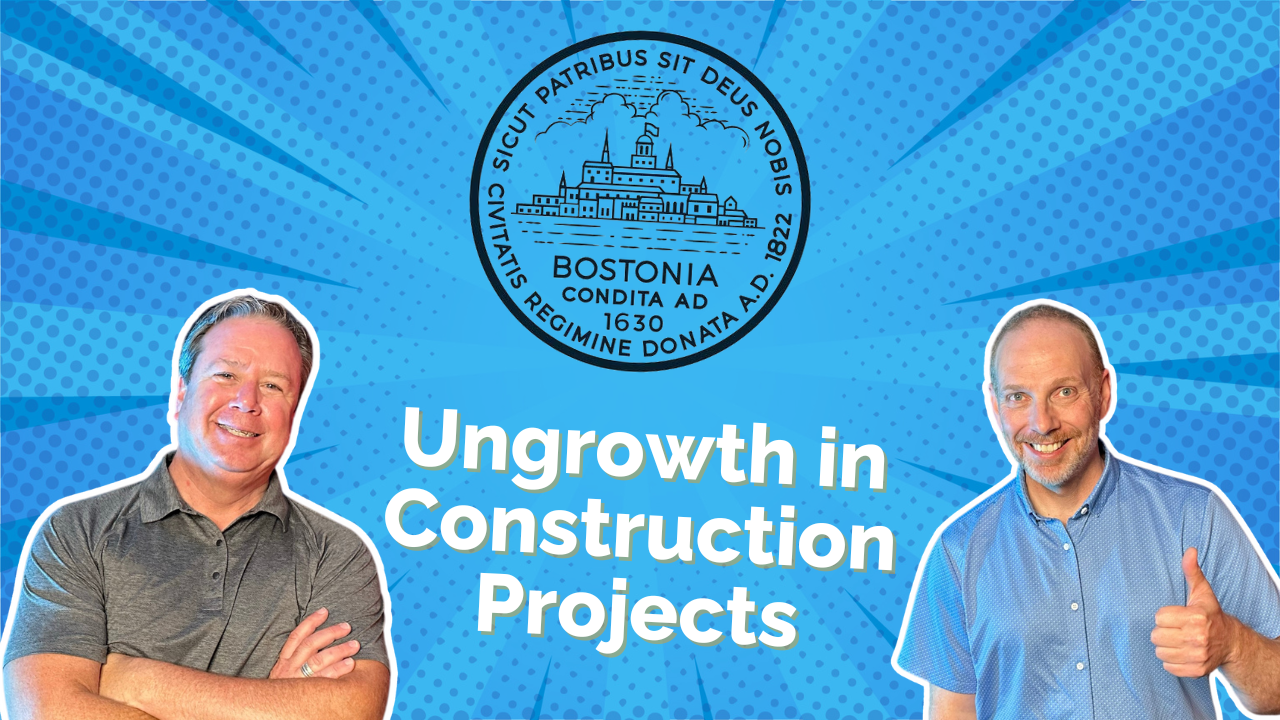3 min read
Ungrowth Lessons from Boston's Big Dig for Your Next Tech Implementation
Mike Spence
Sep 12, 2024 8:15:00 AM

In this episode of The Ungrowth Show, we draw compelling parallels between a massive construction project, Boston’s infamous "Big Dig," and the challenges businesses face during large-scale technology implementations. The Big Dig, known for its significant cost overruns and delays, offers lessons in managing complexity, handling scope creep, and overcoming unforeseen obstacles—lessons that are equally applicable to digital transformation and IT projects.
The Big Dig: A Marvel of Modern Construction and a Management Nightmare
The Big Dig, formally known as the Central Artery/Tunnel Project, was a massive urban infrastructure overhaul designed to alleviate Boston’s traffic congestion. It began in 1982 with an estimated budget of $2.8 billion but eventually ballooned to $22 billion by its completion in 2007. This project encountered a series of challenges, including scope creep, political pressures, and unforeseen technical hurdles. Similarly, many businesses embarking on IT or digital transformation projects face these same risks.
Parallels to Tech Implementations: Managing Complexity and Scope Creep
The most immediate lesson for tech implementation from the Big Dig is the danger of scope creep. What began as a straightforward project to reroute traffic underground became 118 separate construction projects, each with its own goals and complexities. In tech deployments, whether you're implementing new IT systems or going through a digital transformation, the temptation to add features and adjust the scope can be overwhelming. This often results in budget overruns and delayed timelines, as seen with the Big Dig.
To avoid this, businesses should apply principles from strategic growth consulting. Start by setting clear goals and maintain rigorous control over project additions. Use agile project management methodologies that allow you to iterate and adjust while keeping the core objectives intact.
Organizational Change Management (OCM): The Key to Success
One of the Big Dig’s most overlooked challenges was its poor organizational change management. With 118 different construction contracts, numerous stakeholders, and various political pressures, communication broke down, leading to delays and costly mistakes. In any tech implementation or IT project, OCM is critical. Poor change management results in resistance from employees, misalignment of goals, and increased costs.
Strategic growth consulting stresses the importance of clear communication, training, and a structured OCM plan. In technology projects, this means preparing teams for new software or systems, ensuring stakeholders are aligned, and managing expectations from the top down.
The Importance of Budgeting and Risk Management
The Big Dig’s original budget of $2.8 billion was woefully inadequate due to unforeseen complexities, from unstable soil conditions to rerouting public utilities. Similarly, tech projects can encounter hidden "technical debt"—outdated systems or unaccounted-for legacy software that can increase costs and time commitments.
Businesses should engage in detailed risk assessments before starting their digital transformation projects. This involves understanding legacy systems, potential integration challenges, and hidden costs. The key is to future-proof your IT infrastructure by using scalable, adaptable solutions that reduce the likelihood of expensive patches down the line.
The Role of Agile in IT Projects
The Big Dig project could have benefitted from an agile approach to construction—releasing and testing smaller segments instead of tackling everything at once. This is where agile project management shines in tech implementations. Agile allows businesses to break their digital transformation projects into smaller, manageable pieces, delivering value early and iterating based on real-time feedback. Agile methodologies prevent large-scale failures by enabling constant improvement and adaptability.
The Dangers of "Too Big to Fail" Thinking
At multiple points during the Big Dig, stakeholders could have scaled back or reevaluated the project. However, the "too big to fail" mentality prevented this. In IT projects, continuing to invest in failing initiatives can be just as detrimental. Strategic growth consulting advises that companies should periodically assess the viability of a project and not be afraid to pivot or even halt a project if it's no longer delivering value.
Quality Control and Technical Debt
The Big Dig also encountered severe quality control issues, notably a fatal accident due to poor construction materials. In IT, the equivalent of poor quality control is technical debt—quick fixes that work in the short term but lead to bigger problems later. A low-code or no-code approach, which minimizes custom code and prioritizes scalable, future-proof solutions, can help avoid technical debt.
Lessons for Digital Transformation and Strategic Growth Consulting
The Big Dig serves as a cautionary tale for businesses undergoing digital transformation. Whether implementing a new CRM system or transitioning to cloud-based IT infrastructure, the lessons from this construction project are clear:
- Start with a Clear Scope: Define the project’s goals from the outset, and resist the temptation to continuously add new features.
- Prioritize Organizational Change Management: Prepare your team for the transition by communicating effectively and ensuring alignment across departments.
- Use Agile Methods: Break large-scale tech projects into manageable pieces, delivering value early and iterating as you go.
- Monitor Quality and Avoid Technical Debt: Ensure that what you build today will not become a burden tomorrow by using scalable, adaptable technologies.
- Be Willing to Pivot: Don’t fall into the sunk cost fallacy. If a project is failing, reevaluate and make necessary adjustments.
Avoiding Ungrowth in Technology Projects
At its core, the Big Dig represents what we call "ungrowth"—a project intended to drive progress that instead becomes a costly liability. In digital transformation and IT projects, ungrowth occurs when businesses ignore the fundamentals of strategic growth consulting: planning, change management, and scalability. Avoiding the pitfalls of ungrowth requires a commitment to realistic budgeting, quality control, and adaptability. By learning from the Big Dig, businesses can navigate their technology implementations with greater success and fewer headaches.
If you’re about to embark on a tech implementation or digital transformation journey, consider TrellisPoint’s strategic growth consulting services. We help businesses future-proof their technology, ensuring you don’t fall into the traps of ungrowth. Contact us to learn more about how we can assist with your next project.




